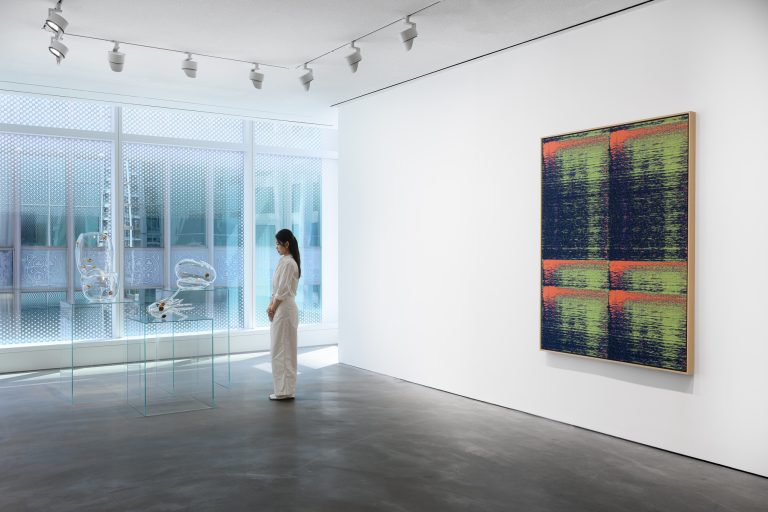
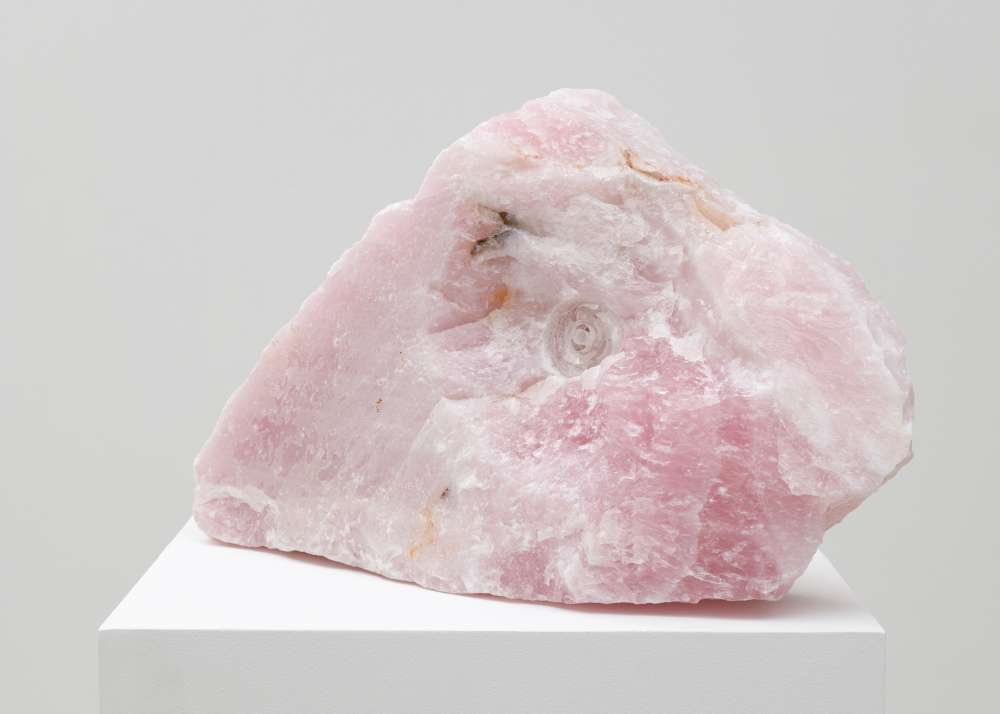
Pranayama (Figurine, 5, Rose Quartz), 2024
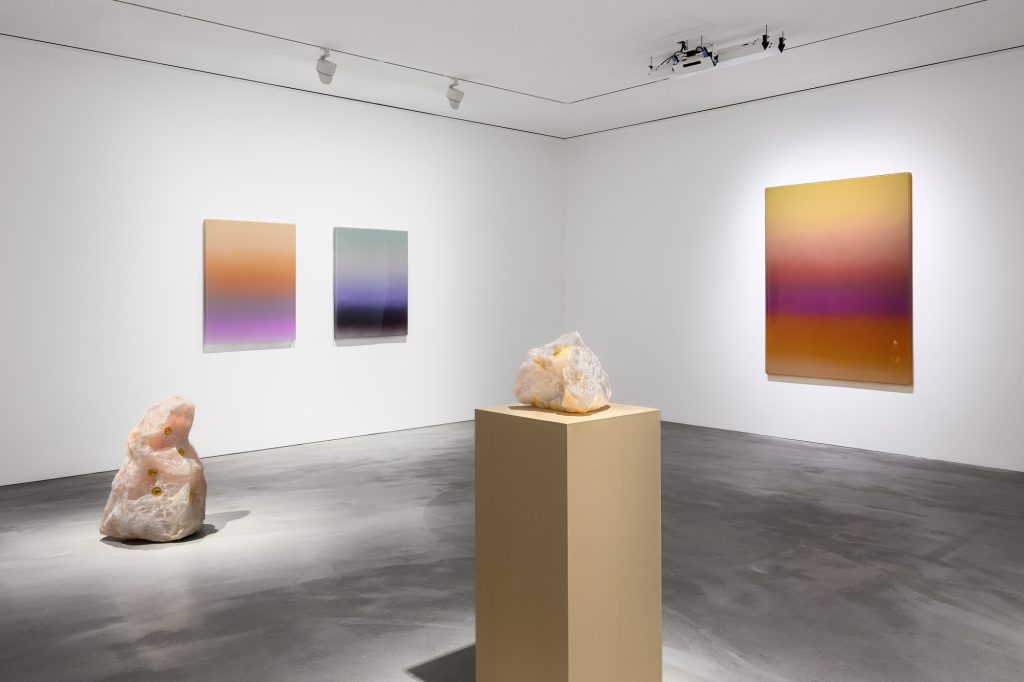
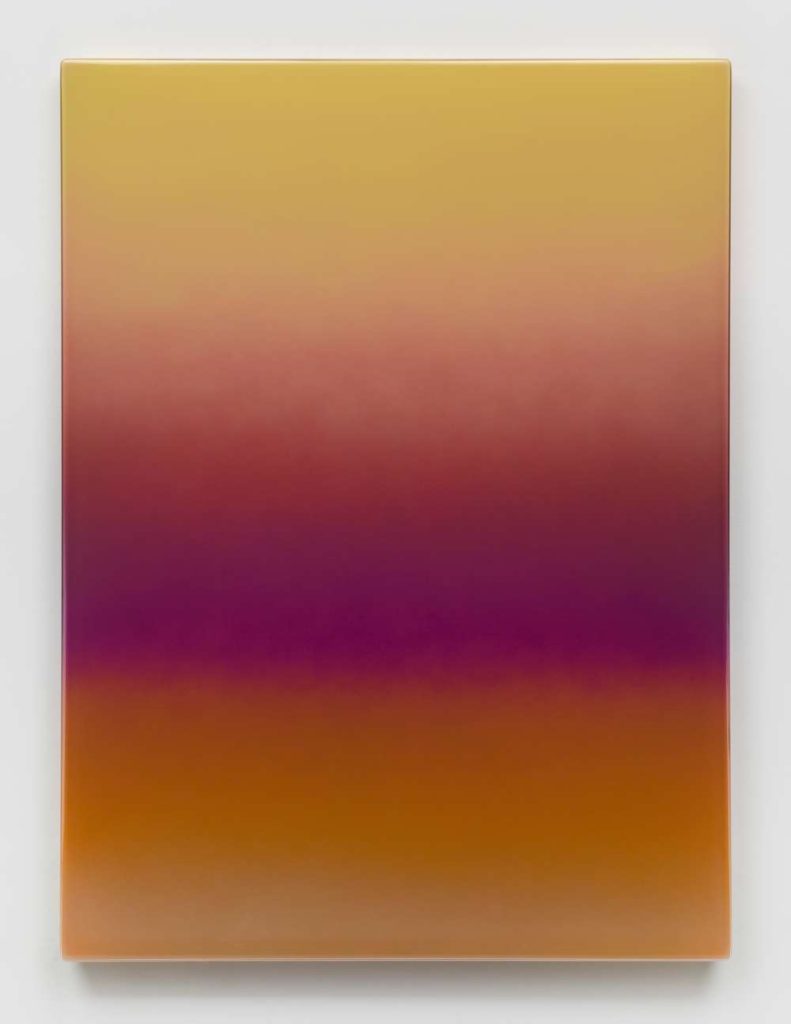
Art d’Ameublement (Orange), 2024
At the intersection of perception, technology, and human emotion lies Penumbra, Mika Tajima’s latest solo exhibition. Known for materialising invisible systems, Tajima takes the viewer in a journey to explore the interplay between light and shadow, presence and absence, in a world shaped by data and control. Featuring luminous installations and dynamic sculptures, Penumbra connects between physical and virtual realities, evoking the liminal spaces where human agency meets systemic forces. Through her innovative use of materials and concepts, Tajima invites viewers to reflect on their existence within the gradients of visibility and influence – where the tangible dissolves into the intangible.
hube: Your exhibition Penumbra at Pace Gallery features your Negative Entropy series. How does your process of transforming auditory data into textiles contribute to the themes of identity and technology?
Mika Tajima: I see the Negative Entropy works as acoustic “portraits,” essentially visualisations of auditory data collected from specific production sites (which often include human subjects). As with all portraiture, these are the abstract, captured essence of an active moment, place, or person. I am interested in what is made visible and what remains hidden in this visualisation. If technology aims to capture and know all, this work represents the poetics of abstraction and interpretation, emphasising that knowing all is ultimately an impossibility.
h: In Sense Object, you combine a large rose quartz sculpture with a 5D memory crystal that encapsulates tweets from January 1, 2023. What inspired this juxtaposition, and how do you see it reflecting our collective digital footprint?
MT: Both are crystals – one forged from the earth under pressure and heat over millions of years, and the other man-made, holding massive amounts of data archivally for a billion years into the future. One holds geologic data; the other holds the emotional data of millions of humans. I wanted to draw a connection between the staggeringly infinitesimal existence of geologic and technological time while simultaneously addressing the contemporary experience of being an individual among the masses of big data and a fleeting moment in the continuum of deep time.
h: The integration of sensory engagement in Penumbra is prominent. How do you choose materials and forms that evoke light and colour, and what role do they play in your overall message?
MT: Through both research and intuition, I select materials that evoke metaphors – smoke, light, colour, air, sound, liquid. My works operate in the space between the immaterial and the tangible, creating heightened encounters that target the senses and emotions of the viewer, underlining the dynamics of control and agency.
h: You have often referenced real-time data in your art. How do current events and societal sentiments influence your creative decisions and the narratives you wish to convey?
MT: I see real-time data as a reflection of our collective consciousness under the influence of geopolitics and societal sentiments. These moments serve as both a mirror and a lens for examining the world. The speed and idea of “real-time” define the mode of our world now, and I use this as a metaphor for the ever-shifting ground on which we stand. Notions of “real” time and the future shape our present, our desires, and influence our behaviors. My hope is to challenge viewers to reflect on how they navigate and live in the world.
h: In Energetics, your work engages with the idea of entropy and the complexities of human experience in a technological landscape. How does this concept influence the visual language and forms you choose in your sculptures and textiles?
MT: Entropy, a concept from thermodynamics, refers to the measure of disorder or randomness in a system. In simple terms, it suggests that systems tend to move from a state of order to disorder over time as energy disperses and becomes less usable. I use this idea to represent the inevitable breakdown, decay, or transformation of structures – especially the resistance to this breakdown, or negentropy, which is an attempt to preserve, capture, or freeze change. The materials I use reflect the tension between order and chaos, with intricate patterns that suggest the order of systems (such as weave structures or algorithms) alongside the unpredictable forces at play in a rapidly changing world. These forms allow me to explore the fragility of existence in an increasingly digital and transient world, while also speaking to what is profoundly human and remains uncapturable despite the dominance of technocapitalism.
h: As someone who transforms sound waves into visual representations, what insights have you gained about the interplay of sound, emotion, and human connection through your work?
MT: By using captured sonic data, I am transmuting and translating the auditory into the visual, creating a bridge between what we hear and what we see. This process highlights the intrinsic power of abstraction and interpretation, revealing how sound and visuals evoke deeply personal and subjective emotional experiences. Sensorial experiences—such as sound, visuals, touch, and smell—have unique resonances, capable of invoking memories, feelings, or states of being that are both universal and profoundly individual.
h: Your art often resonates with contemporary issues. How do you see the role of artists in responding to technological and environmental changes in society today?
MT: I see myself as a translator, interpreter, illusionist, and instigator.
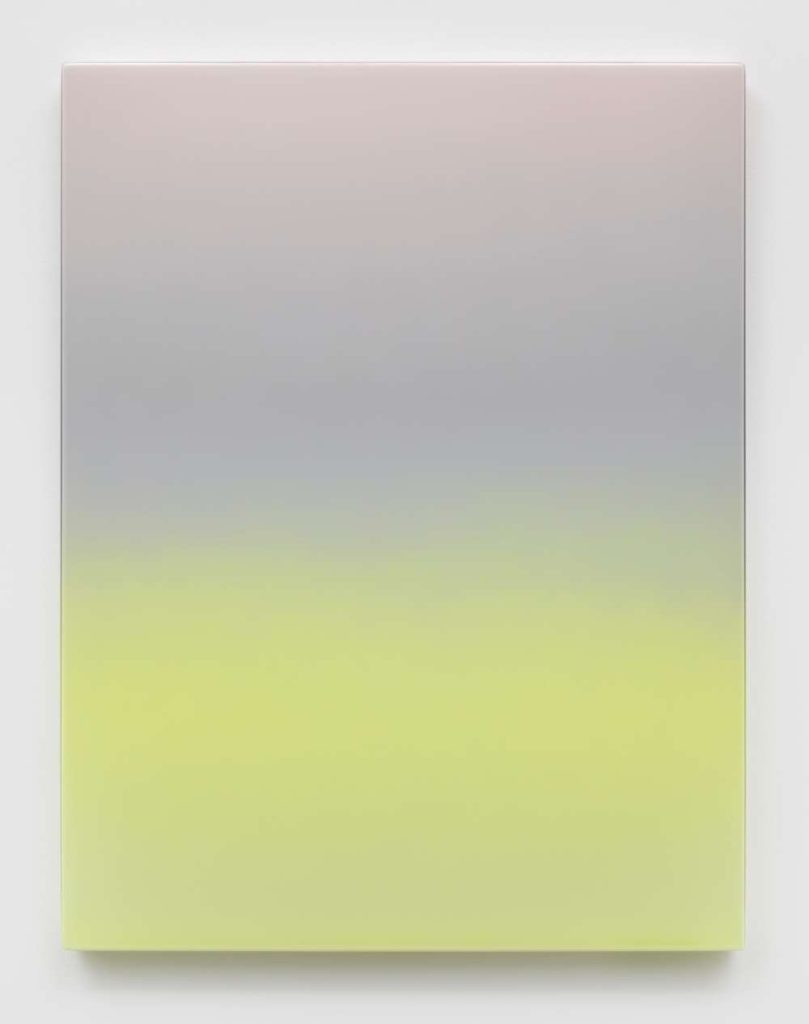
Art d’Ameublement (Tvistein), 2024
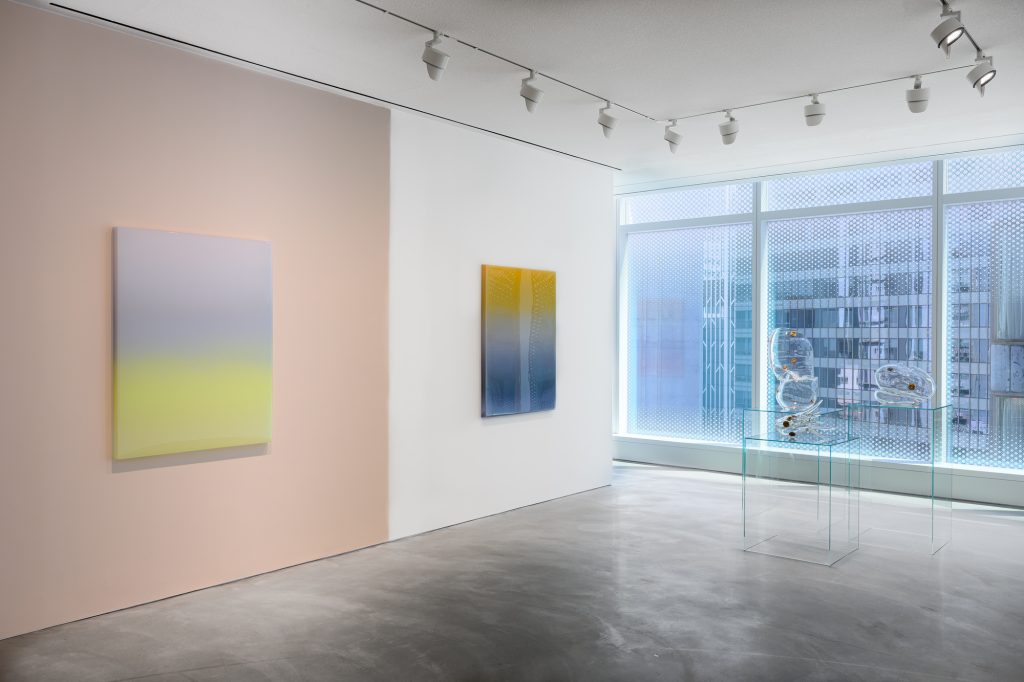

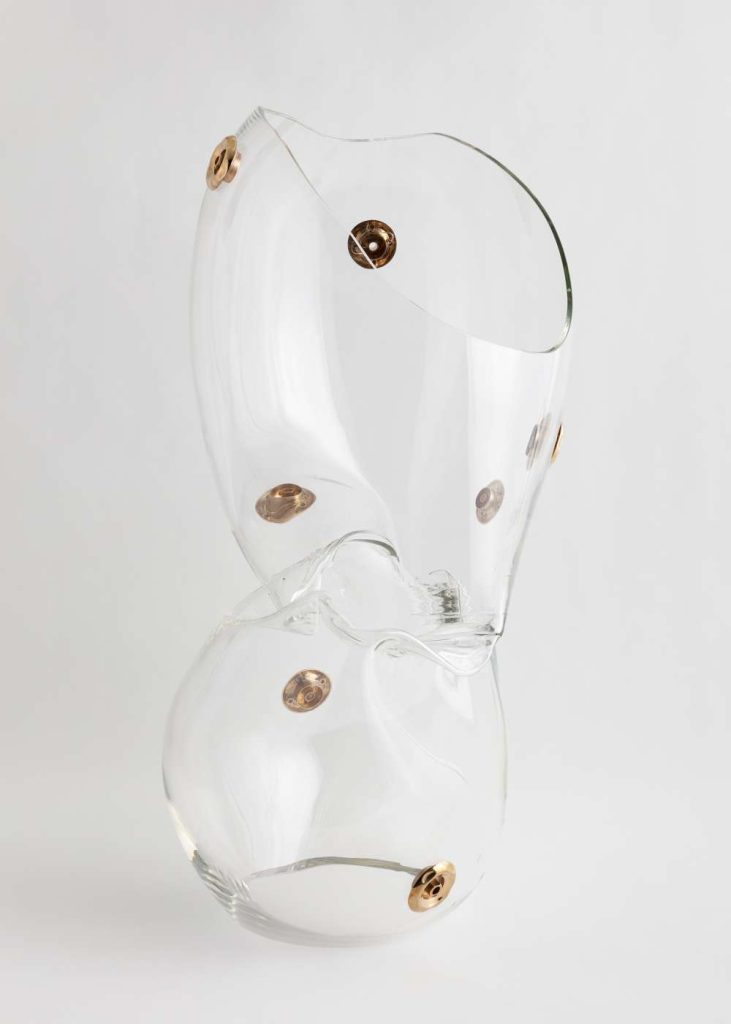
Anima 7, 2020
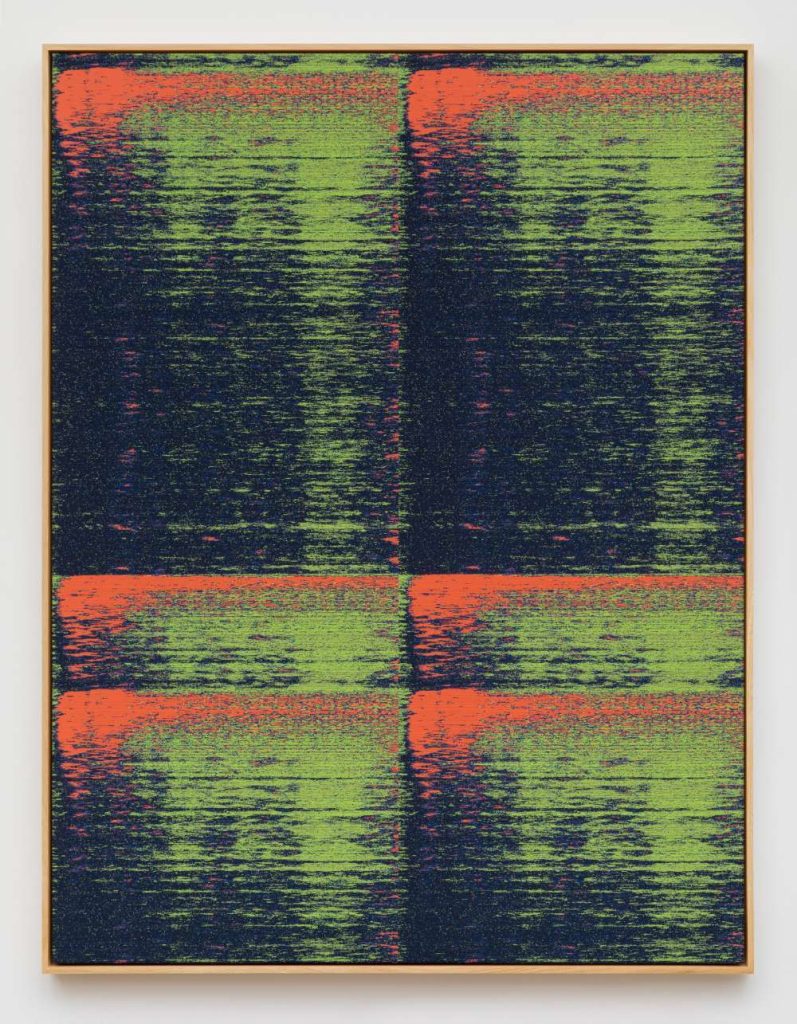
Negative Entropy (Deep Brain
Stimulation, Green, Quad), 2024
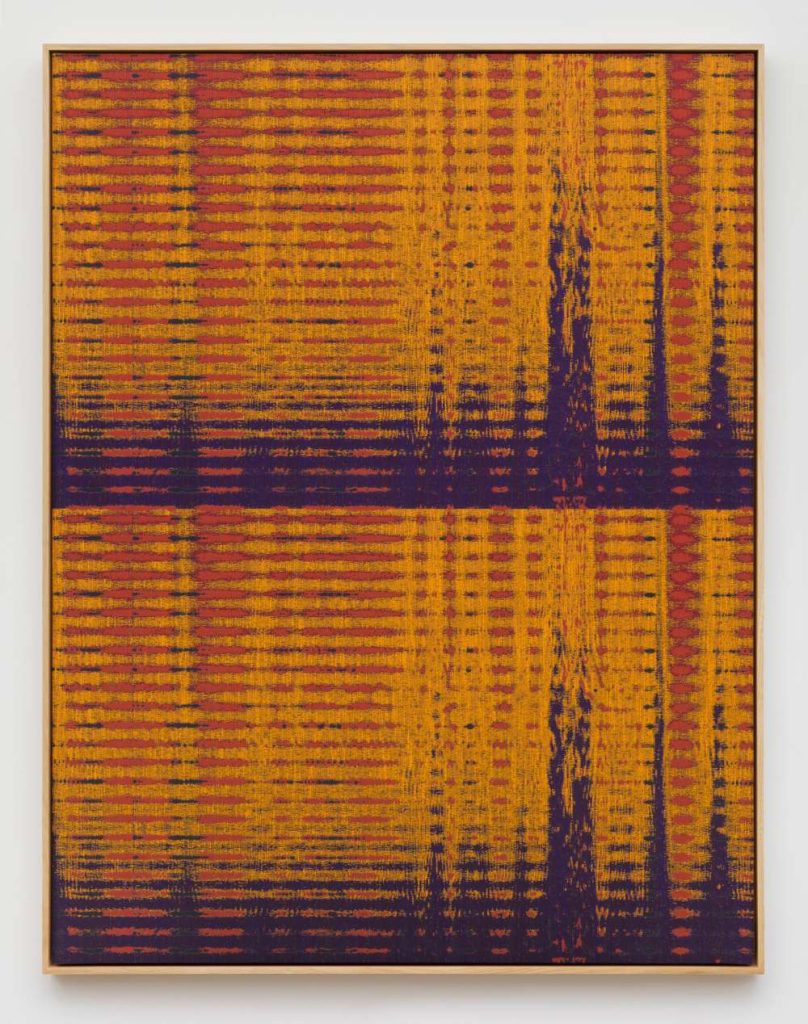
Negative Entropy (Yokohama
Symphostage, Drilling Excavation,
Orange, Double), 2024
Photography courtesy of PACE GALLERY and the artist
